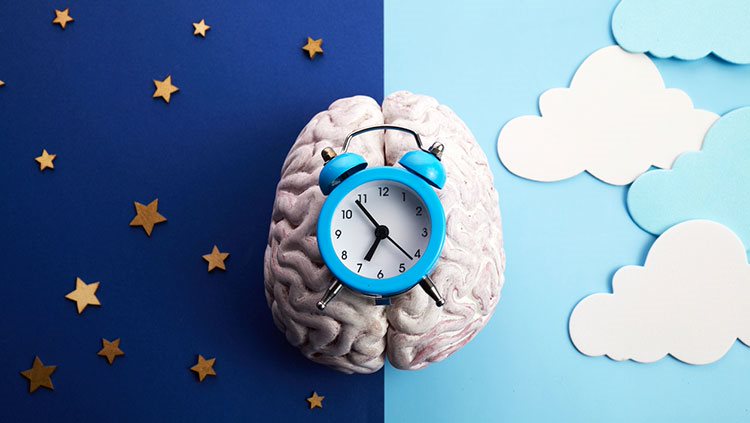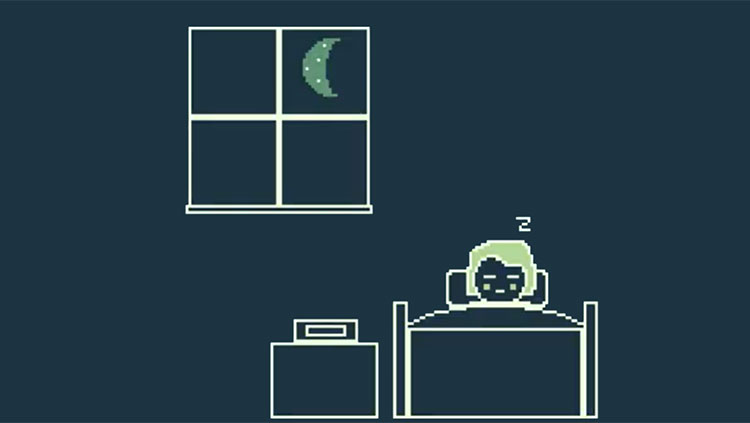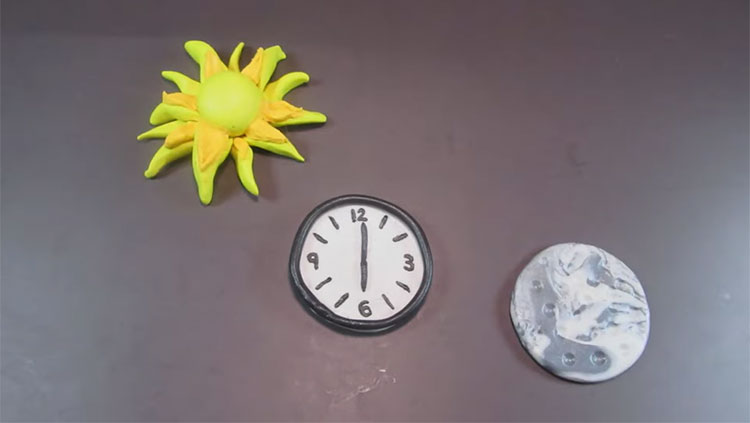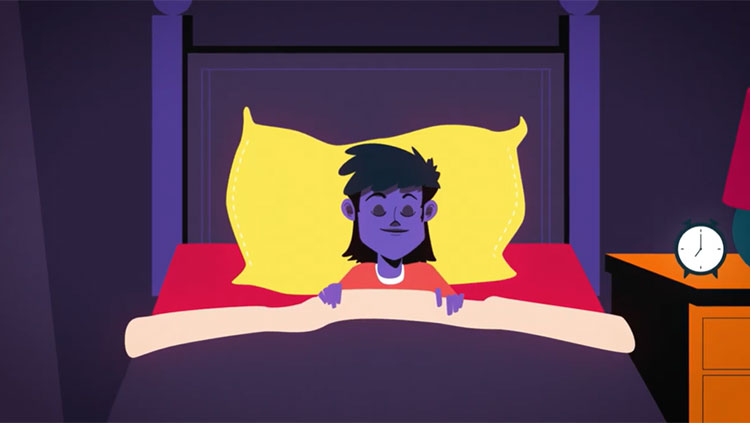How is Sleep Regulated?
- Reviewed15 Aug 2022
- Author Melissa Galinato
- Source BrainFacts/SfN

Most of our lives, we’re in a state of wakefulness — taking in and responding to the world around us. But how does the brain keep us awake?
Wakefulness is maintained by the brain’s arousal systems, each regulating different aspects of the awake state. Many arousal systems reside in the upper brainstem, where neurons connecting with the forebrain deploy the neurotransmitters acetylcholine, norepinephrine, serotonin, and glutamate to keep us awake. Orexin-producing neurons, located in the hypothalamus, send projections to the brainstem and spinal cord, the thalamus and basal ganglia, as well as to the forebrain, the amygdala, and dopamine-producing neurons. In studies of rats and monkeys, orexin appears to exert excitatory effects on other arousal systems. Orexins (there are two types, both small neuropeptides) increase metabolic rate, and their production can be activated by insulin-induced low blood sugar. Thus, they are involved in energy metabolism. Given these functions, it comes as no surprise that orexin-producing neurons are important for preventing a sudden transition to sleep; their loss causes narcolepsy. Orexin neurons also connect to hypothalamic neurons containing the neurotransmitter histamine, which plays a role in staying awake.
The balance of neurotransmitters in the brain is critically important for maintaining certain brain states. For example, the balance of acetylcholine and norepinephrine can affect whether we are awake — high acetylcholine and norepinephrine — or in slow wave sleep (SWS) — low acetylcholine and norepinephrine. During rapid eye movement (REM) sleep, norepinephrine remains low while acetylcholine is high, activating the thalamus and neocortex enough for dreaming to occur; in this brain state, forebrain excitation without external sensory stimuli produces dreams. The forebrain becomes excited by signals from the REM sleep generator (special brainstem neurons), leading to rapid eye movements and suppression of muscle tone — hallmark signs of REM.
During SWS, the brain systems that keep us awake are actively suppressed. This active suppression of arousal systems is caused by the ventrolateral preoptic (VLPO) nucleus, a group of nerve cells in the hypothalamus. Cells in the VLPO release the inhibitory neurotransmitters galanin and gamma-aminobutyric acid (GABA), which can suppress the arousal systems. Damage to the VLPO nucleus leads to irreversible insomnia.
Adapted from the 8th edition of Brain Facts by Melissa Galinato.
CONTENT PROVIDED BY
BrainFacts/SfN
References
Allan, H. J., & Robert, M. (1997). The brain as a dream state generator: an activation-synthesis hypothesis of the dream process. Am J Psychiatr, 134, 1335-1348. https://pdfs.semanticscholar.org/f1af/886bfac2ee058ddaf1a6fb61dabe08e19b08.pdf
Becchetti, A., & Amadeo, A. (2016). Why we forget our dreams: Acetylcholine and norepinephrine in wakefulness and REM sleep. Behavioral and Brain Sciences, 39. https://www.cambridge.org/core/journals/behavioral-and-brain-sciences/article/div-classtitlewhy-we-forget-our-dreams-acetylcholine-and-norepinephrine-in-wakefulness-and-rem-sleepdiv/9C71B973B2BE9F117C17042BC0B43E7E
Carskadon, M.A., & Dement, W.C. (2011). Monitoring and staging human sleep. In M.H. Kryger, T. Roth, & W.C. Dement (Eds.), Principles and practice of sleep medicine, 5th edition, (pp 16-26). St. Louis: Elsevier Saunders. https://www.ninds.nih.gov/Disorders/Patient-Caregiver-Education/Fact-Sheets/Narcolepsy-Fact-Sheet
Chemelli, R. M., Willie, J. T., Sinton, C. M., Elmquist, J. K., Scammell, T., Lee, C. ... & Fitch, T. E. (1999). Narcolepsy in orexin knockout mice: molecular genetics of sleep regulation. Cell, 98(4), 437-451. http://www.sciencedirect.com/science/article/pii/S009286740081973X
Konadhode, R. R., Pelluru, D., & Shiromani, P. J. (2014). Neurons containing orexin or melanin concentrating hormone reciprocally regulate wake and sleep. Frontiers in systems neuroscience, 8. https://www.ncbi.nlm.nih.gov/pmc/articles/PMC4287014/
McEwen, B. S., & Karatsoreos, I. N. (2015). Sleep deprivation and circadian disruption: stress, allostasis, and allostatic load. Sleep medicine clinics, 10(1), 1-10. http://www.sciencedirect.com/science/article/pii/S1556407X14001246
Pelluru, D., Konadhode, R., & Shiromani, P. J. (2013). MCH neurons are the primary sleep-promoting group. Sleep, 36(12), 1779-1781. https://academic.oup.com/sleep/article/36/12/1779/2709396/MCH-Neurons-Are-the-Primary-Sleep-Promoting-Group
Schwartz, M. D., & Kilduff, T. S. (2015). The neurobiology of sleep and wakefulness. Psychiatric Clinics of North America, 38(4), 615-644. http://europepmc.org/articles/pmc4660253
Shiromani, P., Konadhod, R., Pelluru, D., Blanco-Centurion, C., Liu, M., & Mulholland, P. (2013). Optogenetic activation of specific neurons to ameliorate symptoms of narcolepsy in mice. Sleep Medicine, 14, e46-e47. http://www.sciencedirect.com/science/article/pii/S1389945713012896
Tsunematsu, T., Tabuchi, S., Tanaka, K. F., Boyden, E. S., Tominaga, M., & Yamanaka, A. (2013). Long-lasting silencing of orexin/hypocretin neurons using archaerhodopsin induces slow-wave sleep in mice. Behavioural brain research, 255, 64-74. http://www.sciencedirect.com/science/article/pii/S0166432813002921
Verweij, I. M., Romeijn, N., Smit, D. J., Piantoni, G., Van Someren, E. J., & van der Werf, Y. D. (2014). Sleep deprivation leads to a loss of functional connectivity in frontal brain regions. BMC neuroscience, 15(1), 88. https://bmcneurosci.biomedcentral.com/articles/10.1186/1471-2202-15-88
What to Read Next
Also In Sleep
Trending
Popular articles on BrainFacts.org


















